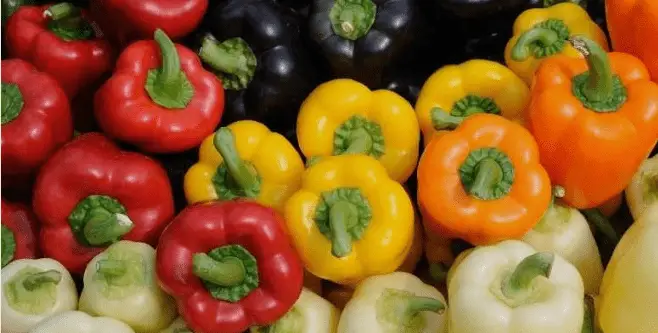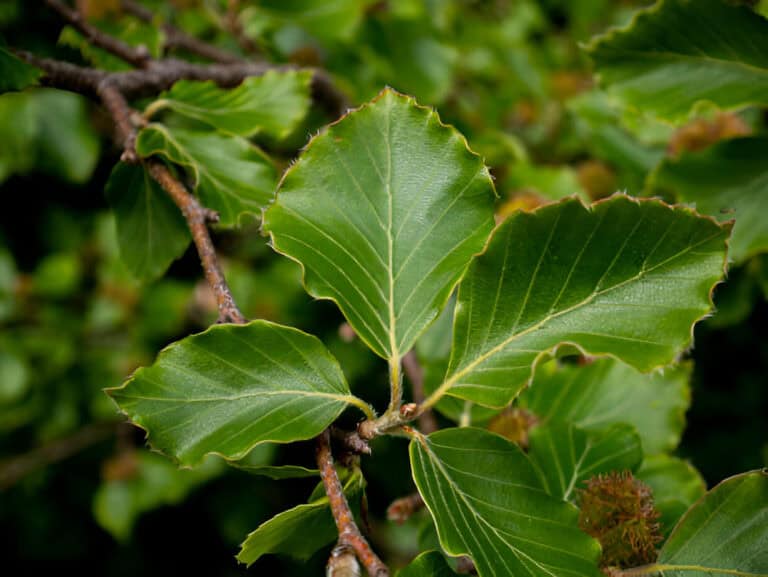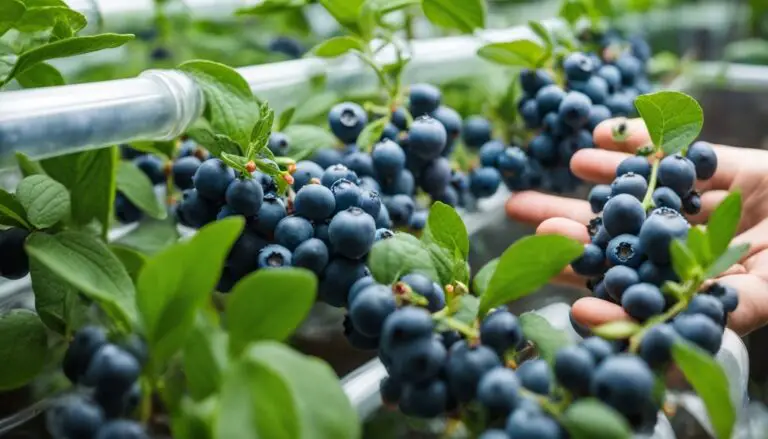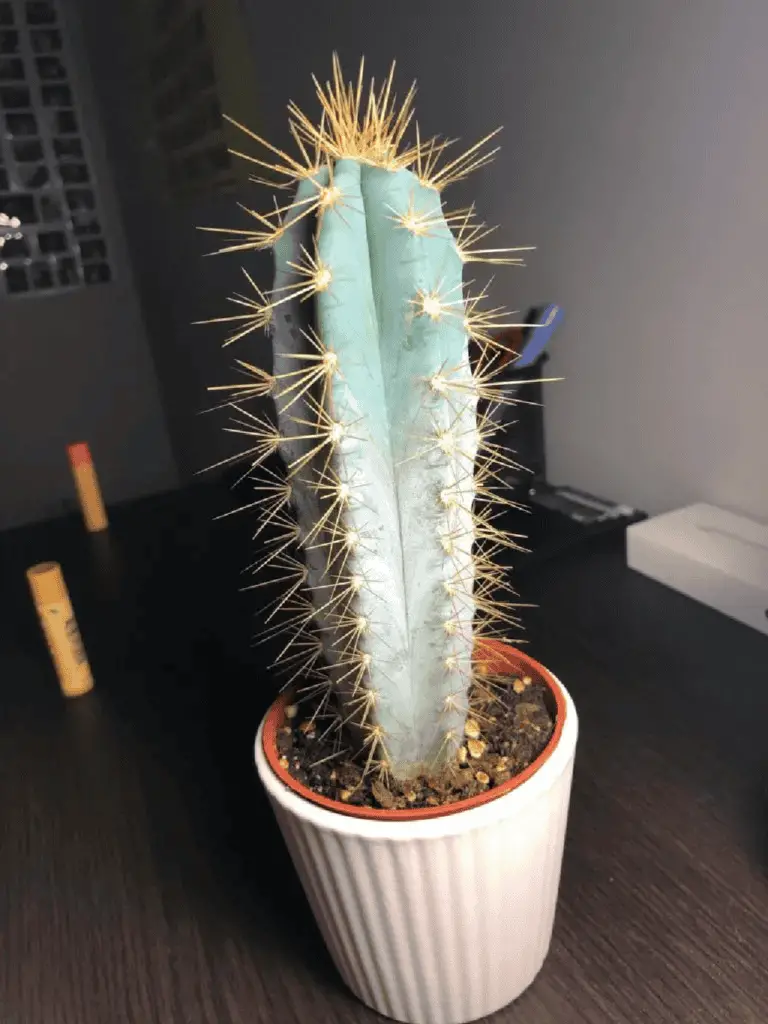Why Is My Mandevilla Losing Leaves? (And How to Treat Them)
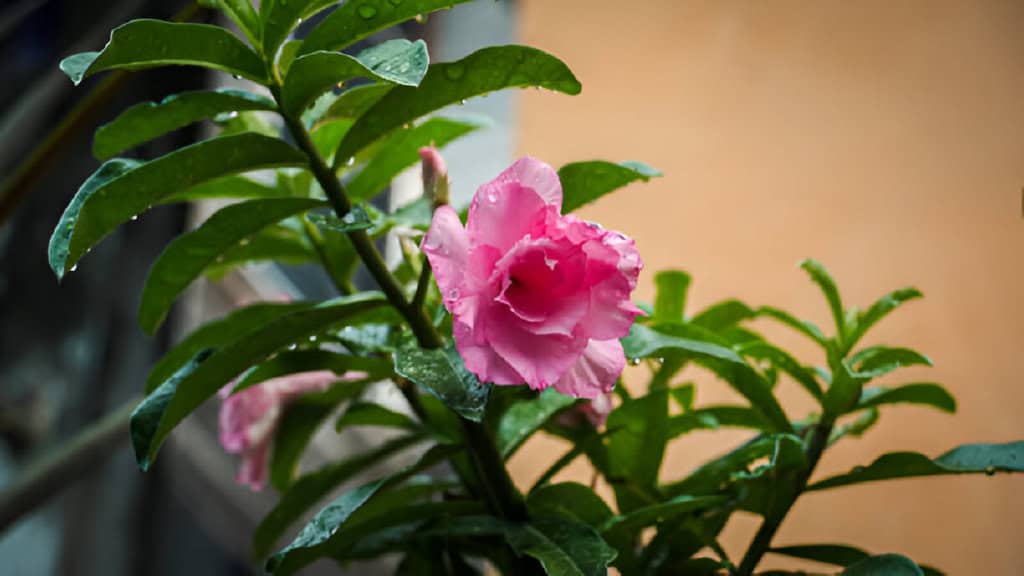
Mandevilla has striking trumpet-shaped flowers and lush leaves. It is a favorite among gardeners for its bright look and ability to thrive in warm climates. But, if mandevilla plants start losing leaves unexpectedly, it can show hidden issues. They need attention.
Several factors can cause leaf loss in Mandevilla. These factors include environmental stressors, pests, and diseases. Understanding these causes. Treating them can restore your mandevilla’s health and beauty.
This is a full guide. We’ll explore why Mandevilla plants lose leaves. The reasons range from the environment to pests and diseases. By the end of this article, you’ll be equipped with practical tips and treatments to revive your Mandevilla and ensure it thrives in your garden.
Why Is My Mandevilla Losing Leaves?
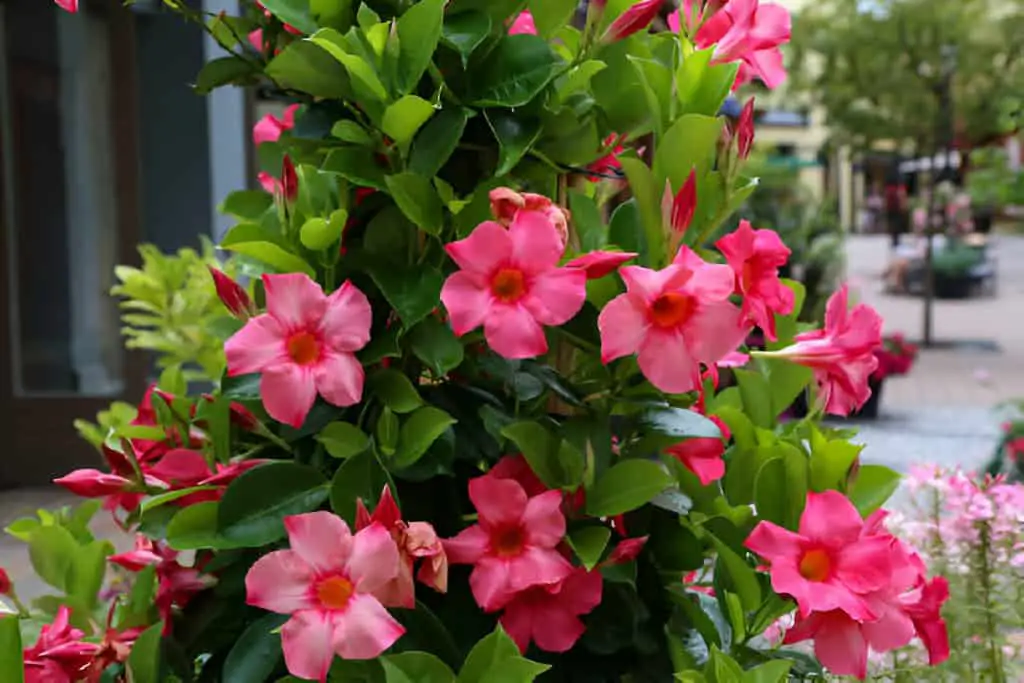
Environmental Factors
1. Temperature and Light: Mandevilla plants are sensitive to temperature fluctuations and light levels. Exposure to cold drafts or sudden changes in temperature can cause stress, leading to leaf drop.
Solution: Plant mandevilla in a location with filtered sunlight or partial shade, especially in hotter climates. Protect plants from the direct afternoon sun and cold winds during the winter. Mulching around the base helps maintain soil temperature and moisture.
2. 2. Watering Issues: The plant suffers from inconsistent watering. This includes overwatering and underwatering. These issues harm the roots and cause the leaves to turn yellow and fall.
Solution: Water Mandevilla deeply and allow the soil to dry out slightly between waterings. Use well-draining soil and avoid waterlogged conditions. Mulching helps retain moisture and regulates soil moisture levels.
Pest and Disease Issues
1. Spider Mites: These tiny pests can infest mandevilla plants, feeding on leaves and causing them to yellow and drop prematurely.
Solution: Inspect mandevilla regularly for signs of webbing and mites. Wash plants with a strong stream of water to remove pests. Use insecticidal soap or neem oil to control severe infestations.
2. Fungal Diseases: Fungal infections, such as powdery mildew or leaf spot, can affect mandevilla leaves, causing them to develop spots, wilt, and eventually drop.
Solution: Ensure good air circulation around plants. Remove affected leaves quickly. Then, treat with fungicides labeled for ornamental plants as directed.
Nutritional Imbalance
1. Nutrient Deficiencies: Nutrient deficiencies are a lack of essential nutrients. These nutrients, like nitrogen and potassium, can weaken mandevilla plants and cause yellowing leaves and leaf drop.
Solution: Test the soil to assess nutrient levels. Use a balanced fertilizer for flowering plants. This is especially important during the growing season. Avoid over-fertilization, which can lead to nutrient imbalances.
Common Problems Table
| Cause | Symptoms | Solution |
| Temperature and Light | Leaf yellowing and drop, sunburn | Plant in partial shade, protect from extreme temperatures and drafts. |
| Watering Issues | Leaf yellowing, wilting, root rot | Water deeply and infrequently, improve soil drainage, mulch around the base. |
| Spider Mites | Webbing on leaves, yellowing, premature leaf drop | Wash leaves with water, use insecticidal soap or neem oil for control. |
| Fungal Diseases | Leaf spots, wilting, leaf drop | Ensure good air circulation, remove affected leaves, treat with fungicides. |
| Nutrient Deficiencies | Yellowing leaves, poor growth | Test soil, amend with balanced fertilizer for flowering plants. |
Is It Normal for Mandevilla Plants to Lose Leaves During Certain Seasons?
Yes, it is normal for Mandevilla plants to experience leaf loss during certain seasons, especially in cooler climates or when transitioning between indoor and outdoor environments.
Mandevilla plants are native to warmer regions and thrive in temperatures above 50°F (10°C). Cold or sudden changes in light and humidity can cause them to shed leaves. This helps them save energy and adapt to their surroundings.
In cold places, Mandevilla plants are often grown as annuals or in containers. They need to be brought indoors for the winter. During this transition, the new conditions, like lower indoor light, drier air, or cooler temperatures, can cause leaf drop. The plant is adjusting to the new conditions.
Similarly, in spring, when moving Mandevilla plants back outdoors, they may lose leaves again. This happens as they get used to more light and temperature changes.
| Read: Why Is My Crassula Losing Leaves (And How to Treat Them) |
How Can I Tell if My Mandevilla Is Healthy Despite Losing Leaves?
To determine your Mandevilla plant’s health, look for key signs. Despite leaf loss, it is possible to do. Even if your Mandevilla is shedding leaves, it can still be healthy overall. Here are some signs to look for:
1. Root Health: Check the roots by gently lifting the plant from its container or digging around the base if planted in the ground. Healthy roots are firm, white, and plump. If they appear mushy, discolored, or have a foul odor, root rot may be present, which requires immediate attention.
2. Stem and Branch Condition: Examine the stems and branches for signs of firmness and flexibility. Healthy stems should be sturdy and resilient, with no signs of wilting or drooping. If you notice mushy or discolored areas, it could indicate disease or pest infestation.
3. New Growth: Look for new shoots and buds emerging from the plant. Healthy Mandevilla plants continue to produce new growth despite losing leaves. New leaves and flowers are a positive sign of overall plant health and vigor.
4. Pest and Disease Inspection: Regularly check the plant for signs of pests. These include spider mites, aphids, and whiteflies. They can weaken the plant and cause leaf loss. Additionally, check for symptoms of fungal diseases like powdery mildew or leaf spots. Addressing pest and disease issues promptly helps maintain plant health.
5. Overall Appearance: Assess the overall appearance of the plant. A healthy Mandevilla should have vibrant foliage. The foliage may be reduced due to seasonal shedding. It should have a compact growth habit and be free from yellowing or withering beyond normal leaf drop.
Conclusion
Fixing leaf loss in your mandevilla requires finding the causes. Then, you can apply the right treatments. You can help your mandevilla regain its vitality and beauty. Do this by managing the environment, preventing pests and disease, and ensuring good nutrition.
You must monitor and care for your mandevilla plants. This is essential for keeping them healthy and vigorous. It ensures they keep gracing your garden with their stunning blooms and lush leaves all season.



